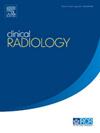High-intensity focused ultrasound treatment of unresectable soft tissue sarcoma and desmoid tumours – a systematic review
IF 2.1
3区 医学
Q2 RADIOLOGY, NUCLEAR MEDICINE & MEDICAL IMAGING
引用次数: 0
Abstract
AIM
We review the evidence for high-intensity focused ultrasound (HIFU) in the treatment of soft tissue sarcoma (STS) and desmoid tumour (DT).
MATERIALS AND METHODS
We searched Embase, Medline, PubMed, and Google Scholar for relevant studies between 2000-2024 using search terms ‘high intensity focused ultrasound’ and ‘sarcoma’ or ‘chordoma’ or ‘desmoid’. We extracted data on patient demographics and treatment outcomes.
RESULTS
We identified 12 studies pertaining to STS (n=178) and 15 studies pertaining to DT (n=417). These were prospective phase I/II open-label trials and retrospective case series or reports. The commonest adverse effects were skin burns, transient pain, and fever. Less common adverse effects of nerve injury and bowel perforation were depended on anatomic relations of the tumour. The majority of patients treated had unresectable disease that was partially ablated with HIFU for the purpose of local control. There was a high degree of variability in the reporting of outcomes making quantitative analysis challenging.
CONCLUSION
The studied papers show that HIFU has a favourable safety profile with a potential role in patients with unresectable STS and DT. HIFU may confer advantages in cases of oligometastatic progression for disease control, complex anatomy including proximity to vital structures, recurrent cases in previously radiotherapy-exposed and/or operated locations with limited other locally-directed treatment options. However, there is limited reporting of the clinically important outcomes of recurrence and survival and further research is required, and this may represent an opportunity for later-phase trials in the UK and worldwide.
高强度聚焦超声治疗不可切除的软组织肉瘤和硬纤维瘤的系统综述
我们回顾了高强度聚焦超声(HIFU)治疗软组织肉瘤(STS)和硬纤维瘤(DT)的证据。材料与方法我们使用“高强度聚焦超声”和“肉瘤”或“脊索瘤”或“硬纤维瘤”搜索Embase、Medline、PubMed和谷歌Scholar检索2000-2024年间的相关研究。我们提取了患者人口统计学和治疗结果的数据。结果我们确定了12项与STS相关的研究(n=178)和15项与DT相关的研究(n=417)。这些是前瞻性I/II期开放标签试验和回顾性病例系列或报告。最常见的不良反应是皮肤烧伤、短暂性疼痛和发烧。神经损伤和肠穿孔等较少见的不良反应取决于肿瘤的解剖关系。大多数接受治疗的患者患有不可切除的疾病,为了局部控制,使用HIFU进行了部分消融。结果报告存在高度的可变性,这使得定量分析具有挑战性。结论HIFU具有良好的安全性,在不可切除的STS和DT患者中具有潜在的作用。HIFU可能在低转移进展的病例中具有优势,用于疾病控制,复杂的解剖结构,包括靠近重要结构,以前放射治疗暴露和/或手术部位复发的病例,其他局部定向治疗选择有限。然而,关于复发和生存的临床重要结果的报道有限,需要进一步的研究,这可能为英国和全世界的后期试验提供了机会。
本文章由计算机程序翻译,如有差异,请以英文原文为准。
求助全文
约1分钟内获得全文
求助全文
来源期刊

Clinical radiology
医学-核医学
CiteScore
4.70
自引率
3.80%
发文量
528
审稿时长
76 days
期刊介绍:
Clinical Radiology is published by Elsevier on behalf of The Royal College of Radiologists. Clinical Radiology is an International Journal bringing you original research, editorials and review articles on all aspects of diagnostic imaging, including:
• Computed tomography
• Magnetic resonance imaging
• Ultrasonography
• Digital radiology
• Interventional radiology
• Radiography
• Nuclear medicine
Papers on radiological protection, quality assurance, audit in radiology and matters relating to radiological training and education are also included. In addition, each issue contains correspondence, book reviews and notices of forthcoming events.
 求助内容:
求助内容: 应助结果提醒方式:
应助结果提醒方式:


